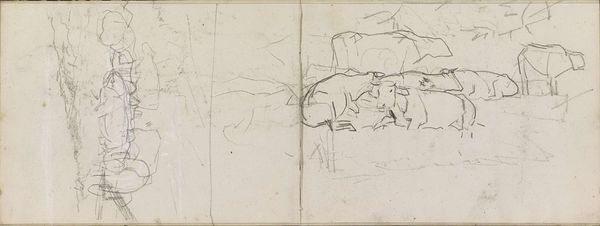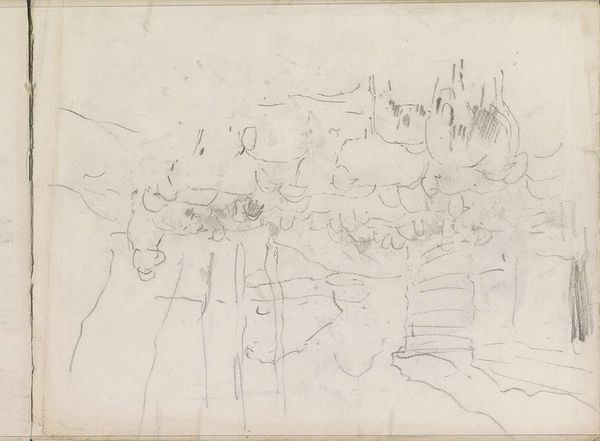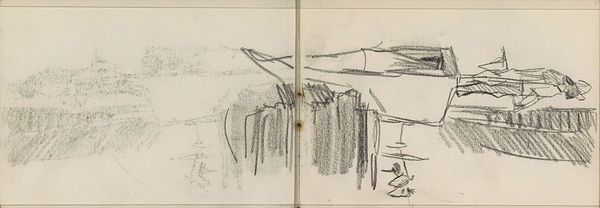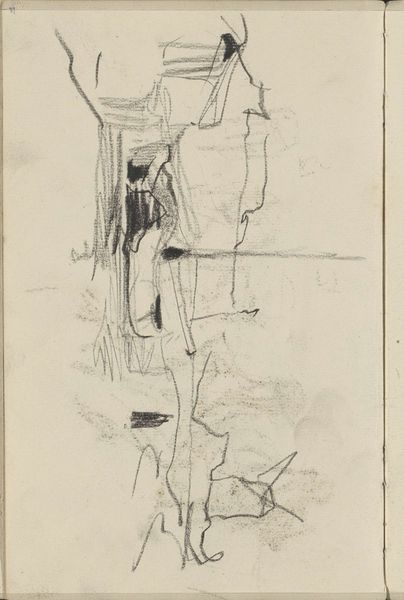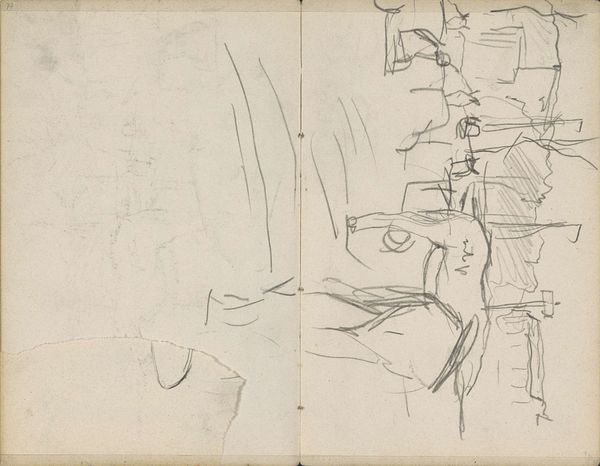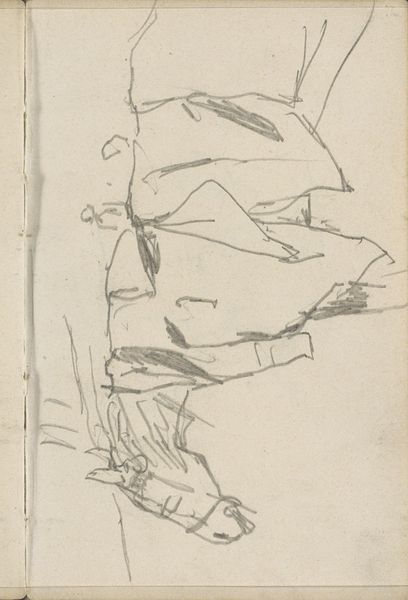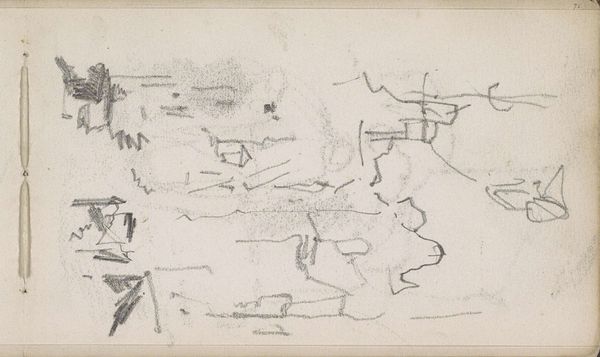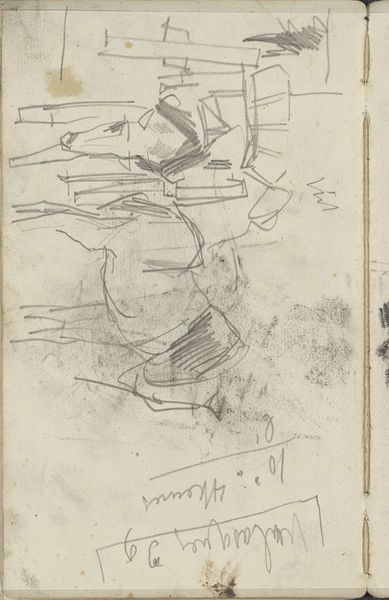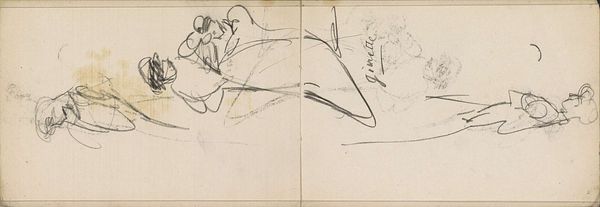
drawing, pencil
#
drawing
#
impressionism
#
pen sketch
#
hand drawn type
#
landscape
#
personal sketchbook
#
sketchwork
#
ink drawing experimentation
#
pen-ink sketch
#
pencil
#
pen work
#
sketchbook drawing
#
sketchbook art
#
realism
#
initial sketch
Copyright: Rijks Museum: Open Domain
Curator: Anton Mauve, known for his landscape paintings depicting rural life, created this quick sketch, “Cows in a Meadow,” around 1876-1879. It’s a pencil and pen drawing currently residing here at the Rijksmuseum. Editor: My first thought is of quiet observation. There’s a fragility to the marks on paper, almost as if Mauve captured a fleeting moment. Curator: Indeed. Mauve’s focus was often on capturing the essence of the Dutch countryside. We can analyze this through a social lens, looking at the agrarian class, their connection to the land, and how labor and animal lives were intertwined in that historical period. Editor: The image of cattle has a long, complicated visual history, ranging from symbols of prosperity and fertility to reflections of exploitation within class systems. But on a basic symbolic level, this small sketch could easily remind viewers of abundance or the everyday struggles in the dairy industry. Do you notice how certain cows in the sketch are outlined with greater clarity? Curator: I do, and that connects to his Realist leanings, where there’s value in recording reality truthfully, including elements that might not be traditionally considered 'beautiful' or classically idealized. Editor: In the tradition of pastoral paintings, cows also became a shorthand for peace. Mauve lived through enormous social change, industrialization, and urbanization. Cows represent our continuing nostalgia for a supposedly simpler, rural way of life, even now. It represents freedom from mechanized life, right? Curator: To an extent. Mauve certainly perpetuated those ideals, yet there are layers of cultural meaning that often remain unaddressed: colonial implications in food production, gender roles, or how "country life" has been sanitized over the course of history to serve particular ideological agendas. Editor: Food for thought! Ultimately, these sketches provide such intimacy that it's difficult to separate any political message from the gentle humanity on display here. Curator: Precisely! Examining this through contemporary theory challenges our perception of these seemingly harmless scenes. Editor: It makes one consider the multiple lenses we use when regarding artistic interpretations of the everyday, even in this initial sketchbook study.
Comments
No comments
Be the first to comment and join the conversation on the ultimate creative platform.

